

Luxury’s immersive future has arrived – and with it, a new creative operating system for the world’s most visionary brands. The latest report in The Future Laboratory and Together Group’s New Codes of Luxury® series explores how immersive technologies are powering innovation across two transformative frontiers: the unbuilt and the untold, and assesses their impact on the property, retail, fashion, beauty and experiential luxury sectors
INTRODUCTION
The next level of immersive luxury experiences
EXCELLENCE IN THE UNBUILT
Immersion as a tool for better spaces in luxury real estate, hospitality and beyond
EXCELLENCE IN THE UNTOLD
Immersion as a tool for next-generation storytelling and entertainment
CONCLUSION
Building the luxury operating system for the experience economy







At its core, luxury celebrates human aspirations by creating iconic products, transformative experiences and meaningful relationships that deliver exceptional value.
While this remains true, technology will play an increasingly important role as the experience economy reshapes expectations. It is lifting long-standing physical constraints, dissolving the trade-off between scale and richness of experience, and levelling up how brands connect with their audiences.
Even the most visionary brands are challenged by fast-moving consumer demands and the rising complexity of content. But immersive technologies are beginning to offer new ways to enhance creativity and experience design at a cultural level, and to increase efficiency and alignment on an operational one.
As luxury shifts from selling products to creating experiences, brands must rethink the environments and stories that bring them to life – across the fashion, beauty, travel, hospitality, real estate and automotive sectors.
Immersive technologies are more than digital layers. In the context of this report, these refer to a range of spatial and real-time design technologies, including digital twins, projection-mapping and simulation engines. Pushing beyond surface interaction, they can build bridges between concepts and execution.
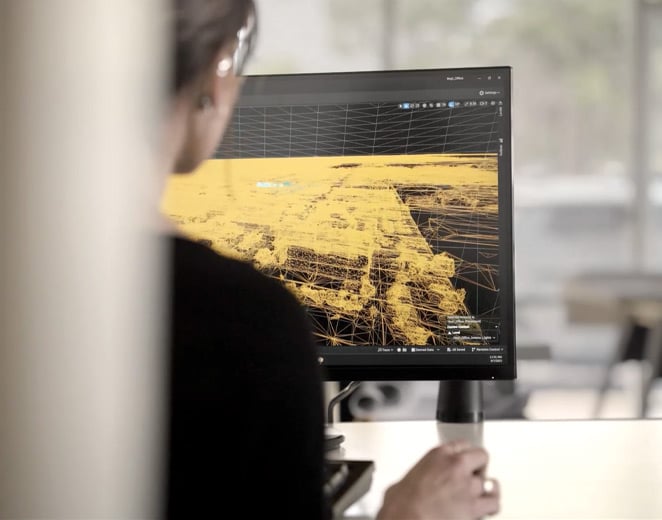
‘We can create emotionally engaging and highly personalised immersive digital luxury experiences that reach well beyond what traditional websites, movies or live events offer. In short, we blend creativity, culture and cutting-edge immersive technologies to take ideation, storytelling and entertainment to the next level’
Christian Kurtzke, CEO, Together Group
While the rise and fall of the metaverse may have made some brands wary, this research does not revisit that narrative. Instead, it moves the conversation forward by focusing on the tangible utility of digital animation, whether in 2D or truly immersive, spatial and 3D technologies, across creative processes, development lifecycles and the brand-to-consumer journey. These technologies are enabling a practical and commercially measurable shift in luxury by delivering proven business outcomes and elevated creative capabilities.
A digital twin is a dynamic virtual model of a physical object, system or process, continuously updated with real-time data to mirror its real-world counterpart’s behaviour and performance.
As the real use cases of digital twins and adjacent technologies become clearer, they are becoming a strategic driver for luxury’s operational and creative future. Indeed, the global digital twin market in fashion and luxury goods is projected to grow by 10.5% between 2023 and 2028, according to Global Market Estimates.
As Christian Kurtzke, CEO of Together Group, explains: ‘We can create emotionally engaging and highly personalised immersive digital luxury experiences that reach well beyond what traditional websites, movies or live events offer. In short, we blend creativity, culture and cutting-edge immersive technologies to take ideation, storytelling and entertainment to the next level.’
Together Group’s vision is to help brands transform from product to an experience economy. ‘We see a need to transform the whole service chain, and for that, you need an operating system including data that will allow you to hyper-personalise, and tech to bring the immersive experiences to life,’ notes Kurtzke.
With this comes new opportunities to remodel the relationship between brands and consumers – and physical and digital processes across the value chain and service model. The possibility lies in rethinking how shared visions are aligned, how stories are told, and how spaces are designed and experienced.
This report explores how brands can use immersive, intelligent solutions and platforms – integrated technologies that create engaging, interactive and dynamic data-driven environments – to transform themselves for the luxury experience economy.
- Introduction
- The Unbuilt
- The Untold
- Conclusion


Immersion as a tool for better spaces in luxury real estate, hospitality and beyond




This chapter explores how technologies such as digital twins, real-time rendering and spatial simulation are reshaping the development lifecycle for luxury environments. It applies to property, placemaking and hospitality, but equally to the design and building of flagship stores and fashion shows, which are often staged in purpose-built or renovated spaces. From conceptual design, stakeholder alignment and future-proofing to pre-sales and ongoing operations, technology offers new ways to envisage, prototype, align and bring these spaces to life.
For now, their greatest impact is being felt behind the scenes, supporting architects, developers, brand leaders and commercial teams in building smarter, more desirable environments – and saving time and cost during complex building projects. But the implications are not limited to internal processes. These same technologies are beginning to influence how luxury is presented, personalised and ultimately experienced. This suggests a future in which the lines between creative simulation and consumer engagement and participation will continue to blur.
From hyper-modern experiential visitor hubs like the re-imagined One Times Square in New York to the colossal immersive architecture of The Mukaab in Riyadh, tech-forward interior and environmental design and placemaking are maturing.
‘In terms of immersive digital luxury experiences, the biggest opportunity we’ve seen is engaging people with these unbuilt projects on a massive scale,’ says Mark Noë, founder of Noë & Associates, a consultancy that delivers brand strategy and identity, content and production with a focus on premium brands, architecture, design and the built environment.
His studio’s work with Neom, for instance, includes photorealistic digital twins that let people ‘experience’ a luxury development long before it’s realised in physical form. ‘We can create a digital twin or a digital replica of a place which is so photorealistic that it feels like you’re there,’ he adds. ‘Bringing something that is so fantastical in so many people’s minds to reality through digital experiences is a massive opportunity.’
‘We can can now create a digital twin of a place which is so photorealistic that it feels like you’re there’
Mark Noë, founder, Noë & Associates
Whether enabling investors to see potential or inviting future residents and property buyers to experience unbuilt spaces, immersive platforms are evolving from back-end systems into dynamic engagement platforms. And while the current applications explored in this chapter are largely focused on physical environments, luxury’s increasing focus on personalisation and participation suggests far broader creative and commercial possibilities ahead.
The creative process for luxury environments has always demanded more than technical accuracy. It’s about orchestrating an overall experience that appeals to the most discerning luxury clients with meticulous attention to detail – one that evokes emotion, builds anticipation and leaves a lasting impression. Yet until recently, there’s been no way beyond traditional renderings to truly understand how a space will make someone feel before it even exists.
At the earliest ideation stage, immersive testing is emerging as a powerful tool for crafting luxury spaces. It enables creative leaders to trial spatial and emotional impact before any building begins, which helps to ensure the experiential intent is captured from the start and carried through to realisation.
Partnering with visionary placemakers to deliver ‘immersive intelligence’, technology studios and digital twin consultancies like Imerza are leading the way. Its work moves beyond visualisation into ‘emotional testing’ – using ambition and architectural fidelity to show not only how a space will look, but also how it will feel.
‘Game engine tech is now really driving and powering a lot of industries, not just real estate and hospitality’
Dorian Vee, co-founder and chief technology officer, Imerza
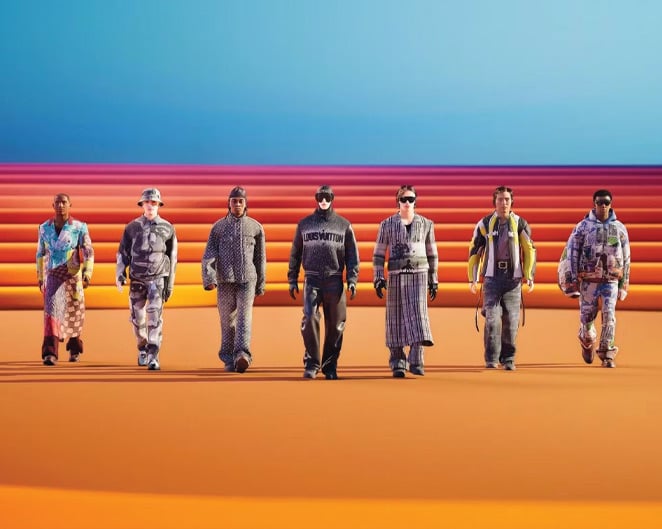
‘We actually allow them to see and feel the future,’ explains Gary Hoyt, CEO and co-founder of Imerza. ‘They’re not looking at it in abstraction.’ His colleague, Dorian Vee, co-founder and chief technology officer, adds: ‘What’s fascinating is the facilitators of all this are game engines [such as Epic Games’ Unreal Engine]. That is the facilitator of, essentially, everything that we’re leveraging – building and integrating what’s needed for a project on top of it. Game engine tech is now really driving and powering a lot of other industries that are not just real estate and hospitality.’
A game engine is a software platform or framework originally designed to support video game creation. But its capabilities now extend far beyond that.
Across industries, game engines are powering some of the most advanced real-time design and simulation. With technologies for photorealistic rendering, spatial interaction and immersive storytelling, they are being used to build high-fidelity digital environments in architecture, retail and fashion.
These platforms are enabling cinematographic visualisation, which is making them a new foundation in the future of luxury experience design.
Noë & Associates, along with Visualisation One – a global architectural visualisation consultancy – are similarly transforming the imagining of an unbuilt place into the experience of being there, which allows the brand story to begin before ground is even broken. Visualisation One, for example, specialises in hyper-realistic, cinematic renderings that vividly bring luxury properties, interiors and destinations to life. As such, these studios act as cultural curators of elevated digital brand experiences.
These environments enable teams to model everything from the way light changes through a space to how a visitor transitions between rooms and the sensory pacing of a key moment of arrival. Spatial mood can be sequenced and refined, giving creative teams new-found control over how a space resonates emotionally.
At this stage, decisions are no longer based solely on budget or blueprint, but on impact. If the atmosphere lacks tension, drama or intimacy, it can be rebalanced in real time. By building for feeling, not just for function, immersive simulation is increasingly valuable at the start of the creative journey. It’s where luxury brands can ideate environments with both precision and presence.
After defining a vision, aligning diverse stakeholders – architects, engineers, brand directors, investors and experiential teams – becomes crucial. Historically, these disciplines have worked in parallel, interpreting plans in different formats, at different depths, and often at cross purposes.
Immersive technologies have the power to bridge that divide. By serving as the single source of all dispersed data sources and allowing powerful visualisation of such complex data, spatially rich, real-time environments offer a shared reference point at which all parties can see, feel and understand the same version of a project – not only structurally, but also experientially.
Tomorrow’s luxury environments need technologies that evolve with them. Simulation engines and AI are giving teams the technologies to plan for uncertainty and future-proof design and decisions. These immersive platforms help brands visualise, iterate and refine spatial plans at pace.
They also make it possible to explore multiple scenarios and visualise complex data from today into the future. This provides a dynamic view of how a concept holds up over time. By building a live reference model early, the risk of late-stage revisions is lowered and creative intent remains intact.
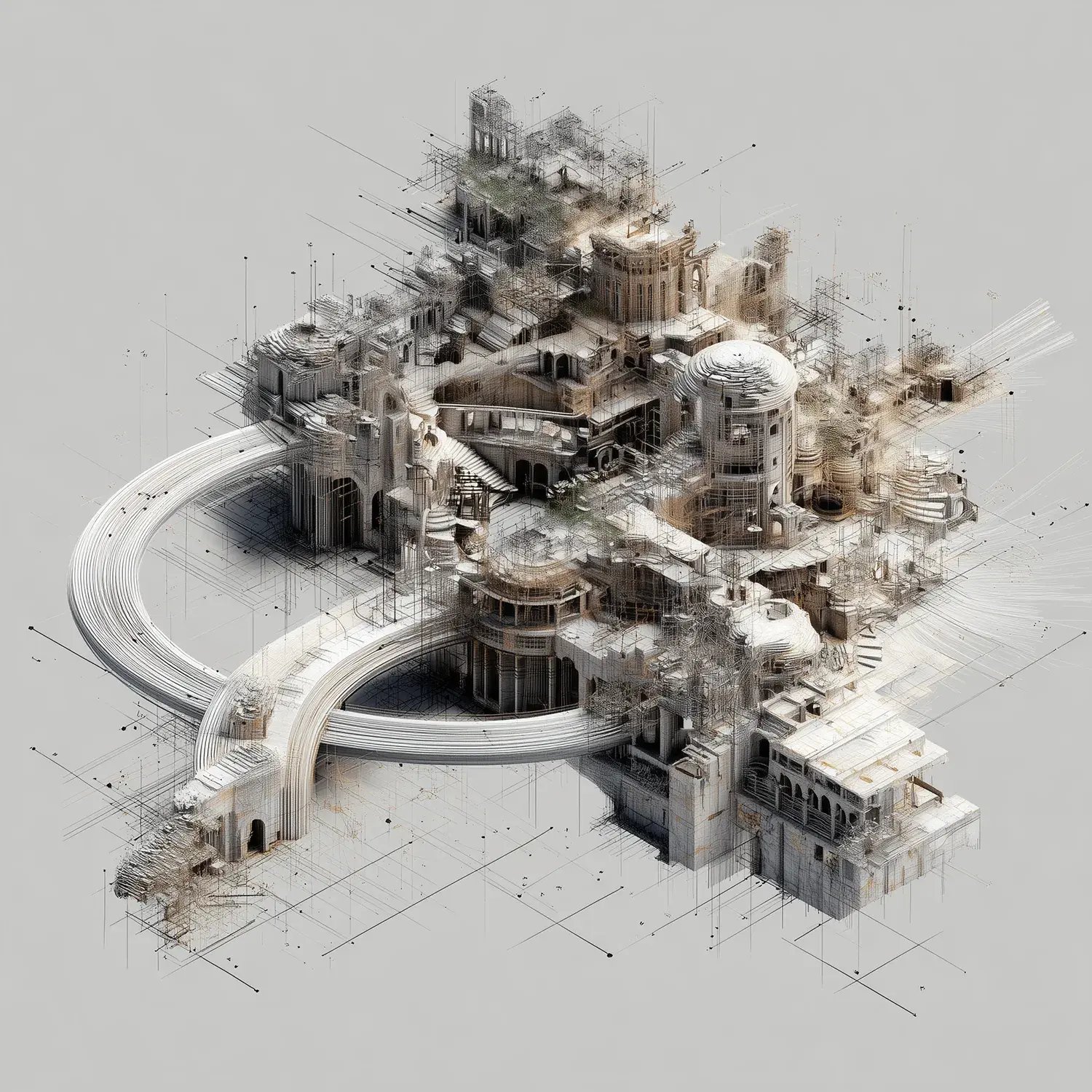
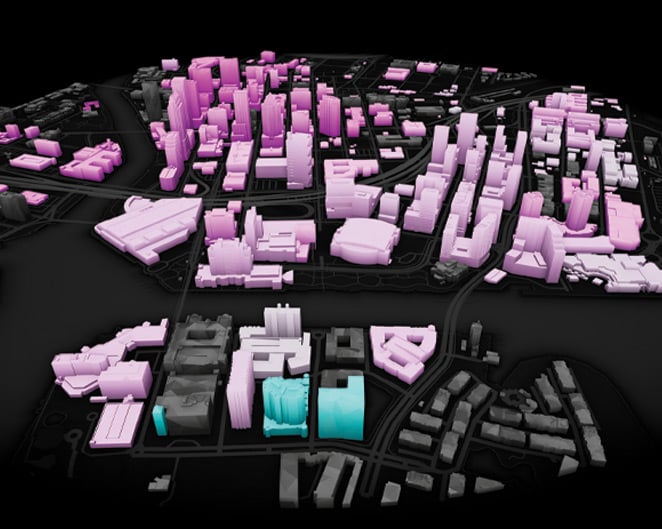
‘It is very common for different people with different backgrounds to not see the same project,’ explains Imerza’s Hoyt. ‘Our system – and the immersive model – allow everyone to see the same project: the final vision, as well as the way it will evolve from today over time.’
That clarity elevates both efficiency and creativity. Instead of long email chains or static floorplans, contributors can walk through the design and give input in the context of the intended atmosphere. Creative leads can guide narrative flow and technical teams can flag issues – all inside the same environment.
This kind of alignment also gives brand stakeholders the ability to shape the vision early on. No longer reliant on interpretive renderings or abstract schematics, they can step inside the idea and respond to what it feels like. This leads to faster buy-in and more meaningful feedback.
In this phase, immersive platforms can become an operating system for collaborative ideation, design and planning.
When it comes to transforming how luxury spaces and products are pitched, marketed and sold, immersive technologies are raising the bar here too. Once a project reaches the stage of stakeholder presentation or commercial launch, the technologies used to communicate it become just as important as the design itself.
High-fidelity digital environments now serve as immersive sales platforms. Whether a flagship store, branded residence or mixed-use development, the experience can be explored spatially and in-depth. Potential buyers, investors or brand partners can look beyond mood boards by stepping into the concept itself. They can walk through the lobby, see the light change by time of day and experience the intended atmosphere at first hand.
‘From the sales perspective, what’s better than walking somebody through their apartment where they can also simulate different furniture packs and different interior design styles?’ says Danny Drohojowski, executive producer at Noë & Associates. Whether persuading investors or enabling consumers to co-design, immersive technologies are transforming what buy-in looks like.
It also strengthens the business case. Instead of needing to persuade stakeholders, they can make choices that shape the real-world output once they can see and feel what the project offers up close, virtually. Engaging with a project’s full potential in the earlier stages brings new levels of commercial confidence, which can in turn accelerate investment decisions, reduce development risk and improve pre-sales conversion.
72% of luxury fashion consumers in the UK say it’s important for brands to offer AR solutions as part of their shopping experience
Vogue Business and Snap
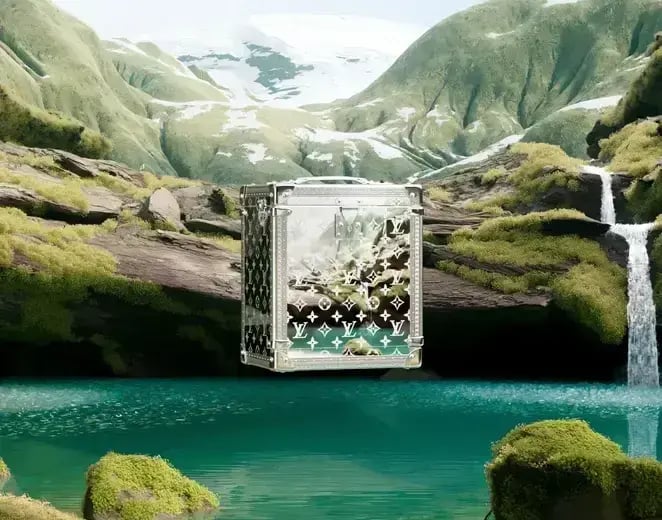
In terms of product twins, similar principles are already at work in the luxury automotive sector. Porsche’s Exclusive Manufaktur programme, for instance, lets customers tailor every detail of their vehicle – from upholstery to seat stitching – with digital product twins bringing those options to life in real time. Rolls-Royce and Lamborghini also offer immersive configuration technologies that allow clients to explore bespoke choices visually and spatially before purchase. This kind of ultra-personalisation shows how immersive platforms can transform the sales process.
And while these examples focus on spatial and physical assets, there are clear signals of appetite for immersive interaction at the consumer level too. Almost three-quarters (72%) of luxury fashion consumers in the UK say it’s important for brands to offer AR solutions as part of their shopping experience, according to a white paper from Vogue Business and Snap. Apple’s recent VisionOS 26 update further signals this momentum by introducing new shared spatial experiences, generative AI-powered scenes, and expanded immersive content capabilities.
Some of this has the potential to reshape luxury sales and marketing. For brands, new storytelling possibilities enter the frame. The visual and spatial expression of a project doesn’t begin post-construction. It can live and evolve inside the immersive model, which starts to serve as a platform for campaign assets, investor decks and guest previews. In other words, the sales process is, in many ways, becoming an extension of the design narrative.
In the development cycle, digital assets can be set aside once a space is built. But with immersive platforms, the digital twin has the potential to remain active, becoming a long-term operating layer that evolves with the environment.
A well-structured environmental digital twin can carry forward everything from brand narrative to spatial logic, from design intent to operational data. ‘It’s the central armature that everything hangs off,’ says Imerza’s Hoyt. Rather than reflecting what a space looked like at launch, the twin becomes a living system – able to simulate, update and respond to changes in behaviour and environment.
This has deep implications for luxury brands and creates an opportunity to gather important customer data beyond sheer transactions. A flagship store or cultural destination, for instance, can stop being static. It can become a dynamic, intelligent platform that can be simulated, updated and experienced across multiple channels. It can then be used to prototype new visual stories or retail layouts. Operations teams can test changes in flow, lighting or visitor movement. Marketing teams can use it to power immersive campaigns or virtual previews. Even more, it can seamlessly transition from design and planning to testing and simulation, and to physical construction and digital experience activation.
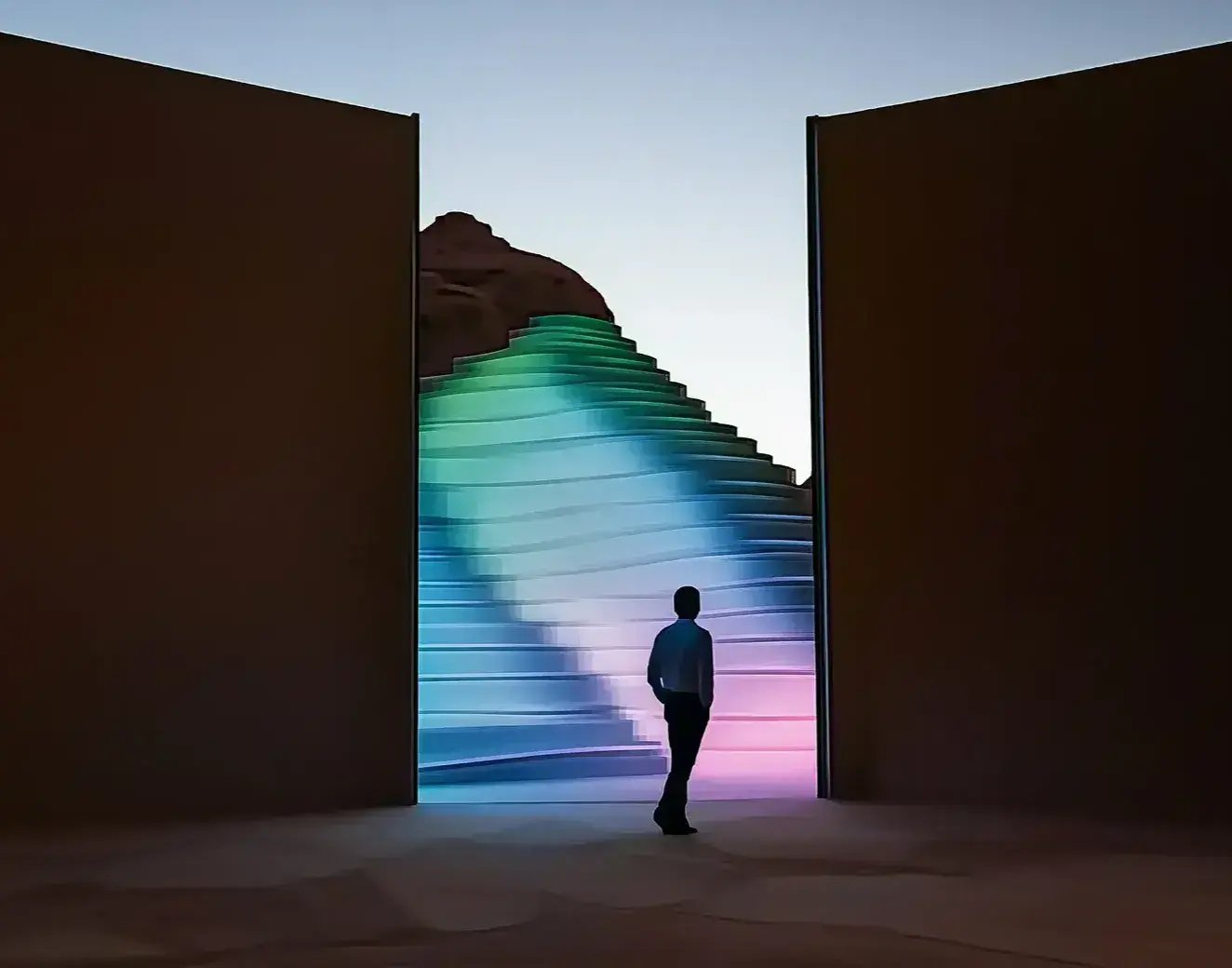
‘There's a distinction between visual twins and true digital twins’, explains Noë & Associates’ Drohojowski. A digital twin becomes dynamic when it reflects not just the physical structure but also its ongoing behaviours. ‘The moment you start connecting live data like sensor-driven climate controls or real-time occupancy patterns, that's when it becomes a true digital twin’, he says. ‘It shifts from a static visual replica to an immersive intelligent system, capable of optimising everything from energy usage and guest flows to how a place is built and evolves over time.’
Ongoing utility such as this becomes a business asset. By retaining a dynamic model of the space, brands gain a platform for continuous optimisation and evolution. The digital twin then becomes a strategic driver of long-term value.
The result is a space that stays alive. It can be updated with new narratives, retrofitted with new use cases, and scaled across physical and digital touchpoints. ‘What we are entering is a very visceral era of computing and experiential commerce,’ adds Drohojowski.
As immersive platforms become more deeply embedded in the luxury sector, digital twins are emerging as more than visual technologies. They are a means of connecting creative ambition with business performance, and of building resilience, responsiveness and renewal into the future spaces that define a brand.
For luxury brands investing in ambitious spaces, there is a compelling business case for digital twins. They are an investment in getting it right and making faster decisions with fewer surprises and stronger margins.
For significant building projects, the return on investment of digital twins is increasingly clear. The cost of creating one is often outweighed by what it saves in timelines, budget and stakeholder alignment.
In commercial developments, digital twins can also speed up sales, support higher pricing per square foot and streamline marketing collateral. Across several major real estate and destination developments, Together Group agencies have used digital twins for measurable impact:
30%
15%
75%


Immersion as next-generation storytelling and entertainment





While Part One explores how immersive platforms are reshaping the design and development of luxury’s physical environments, Part Two shows how these same technologies are becoming the new infrastructure for the next generation of storytelling, creative activation and brand expression.
As luxury moves beyond the object, narrative and experiences are becoming some of its most valuable assets. Turning experiential storytelling into a true strategic asset, however, calls for cultural buy-in, operational readiness, and transformational leadership and vision.
In recent years, hype around the metaverse created an initial spike in interest, but also left a hangover. Creative and commercial teams are now approaching immersive technologies with a more measured, strategic mindset by asking what’s meaningful, feasible and creatively on-brand.
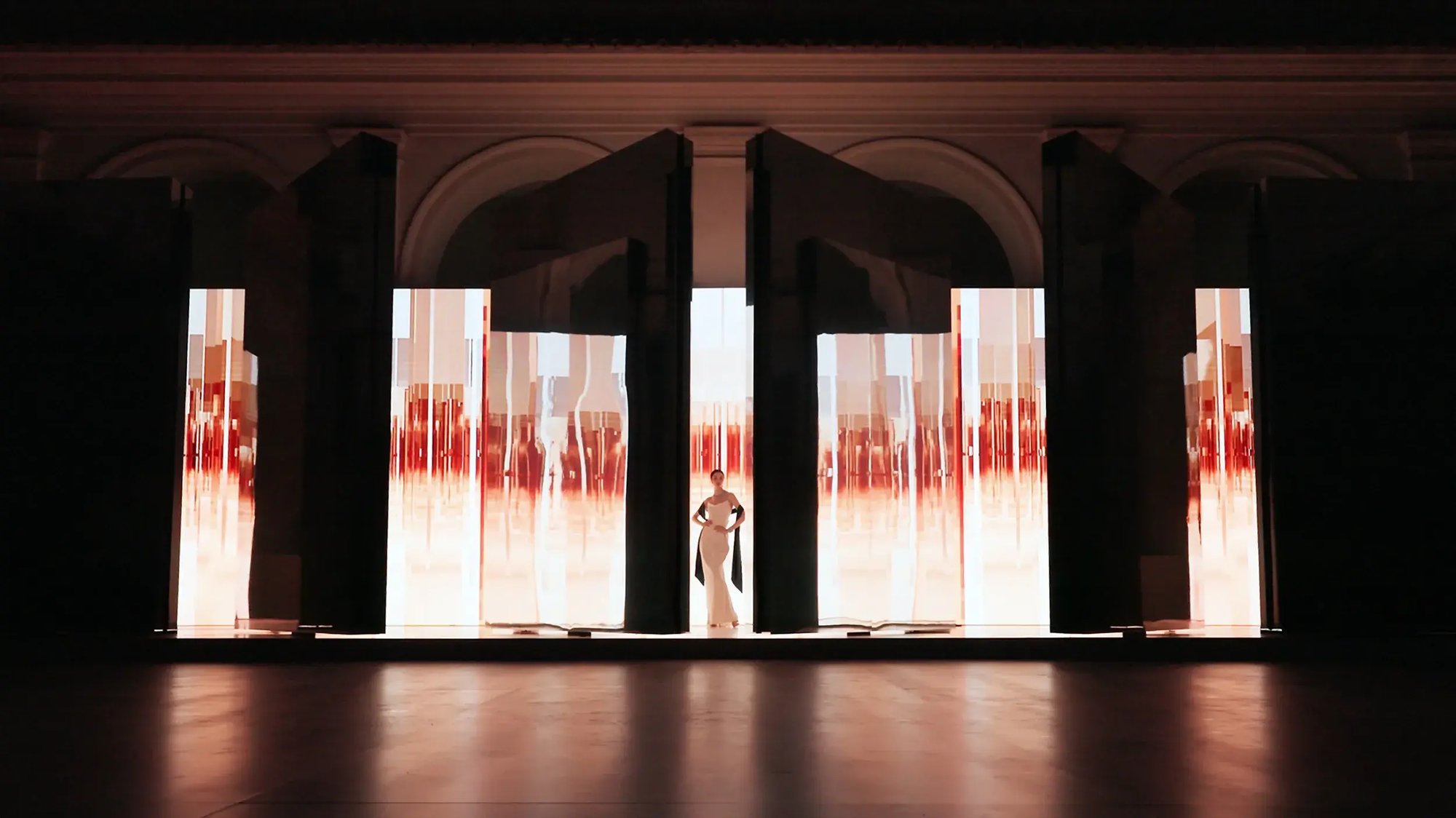
Despite uneven adoption, immersive technologies hold promise – and advantage – for enhancing experience and emotion. But it is essential to recognise that technology alone doesn’t guarantee creative depth. The true value emerges when these technologies are used judiciously to support, rather than dictate, creative vision.
This chapter explores that opportunity across four critical phases of the creative-to-consumer journey. It examines how immersive technologies can support spatial ideation, campaign coherence, experiential retail and cultural production to extend the emotional and commercial life of a brand – beyond gimmicks.
What if creative directors could design inside their ideas instead of sketching around them? Emerging immersive platforms are beginning to offer just that by enabling new ways for creative leaders in luxury to work spatially, intuitively and collaboratively from the planning phases of a campaign or brand activation.
While these offer clear creative potential, their adoption often depends on individual buy-in at the highest level. Without creative acceptance and endorsement, experimentation can stall – reminding us that new tools alone do not change process unless mindsets evolve too.
Spatial and real-time design technologies are already used across architecture and visualisation to create high-fidelity 3D environments. Increasingly, they could be explored by creative teams in fashion and experience design to build spatial concepts and scenography before production begins. Why? Because they allow ideas to be modelled and refined in real time with lighting, atmosphere, pacing and scale all adjustable.
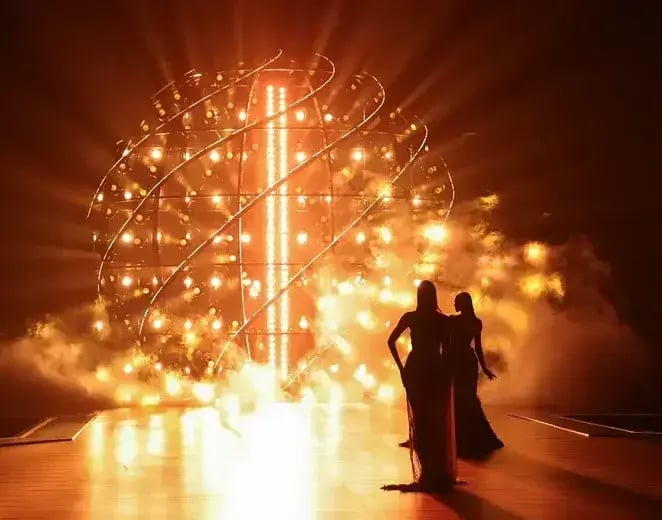
This early-stage simulation is especially valuable in luxury, where experiential effect is central to how a brand expresses identity and emotion. In the same way that architects walk clients through future buildings, creative directors can now preview campaign spaces or product launches, sharing both vision and feeling. Creatives can hold and process increasing complexity in their projects.
‘What [technology] does is augment everything,’ explains René Célestin, founder of OBO agency, who has spent more than two decades orchestrating some of the most innovative fashion shows and luxury events. ‘The strongest ideas we’ve ever had have all started with a blank piece of paper and a pencil. But with the right technologies you can put 180 layers over the top of each other… no human brain can possibly comprehend that level of information.’
Creative experiential studios and producers such as OBO are already working with creative directors and brand strategists to develop virtual spatial prototypes for fashion shows and major events like the 2024 Olympics in Paris, creating an unmatched richness of digital experiences as well as enhancing physical live experiences. In a similar way, campaign concepts, pop-ups and even clienteling spaces can also be staged digitally.
In a broader context, AI is becoming a creative co-pilot. Rather than replacing vision, it is being used to bring inspiration to the fore, streamline ideation and extend creative fluency. Although not immersive, the Dazed Archive, launched in 2025, uses AI to mine three decades of fashion and culture coverage, turning its archive into a dynamic reference engine. Similarly, designers like Norma Kamali, in partnership with Maison Meta, are using bespoke generative AI to unlock new design directions grounded in brand heritage. These early experiments show how AI is enhancing – not automating – the creative process.
These examples hint at a more macro-shift: from developing linear workflows to designing systems, and from reactive production to creative simulation. For now, immersive design environments remain niche, but their potential to support creative freedom – and reduce compromise – is becoming clearer.
As luxury storytelling matures, the question for brands and next-level marketing is changing from how to launch a campaign to how to build a world, one in which the story is no longer told only in a standardised, linear way like in movie productions, for example, but where it can be discovered and hyper-personalised – bringing to life brand experiences and entertainment.
Brands are now entering an era of multi-format storytelling built on longer narrative arcs – where systems of meaning persist and expand. The result is a series of interconnected story worlds, and immersive technology may provide the future infrastructure to support their evolution.
‘Luxury has always been about storytelling and aspiration,’ says Isabella Gallucci, chief brand officer at xydrobe, a new-wave company that works with luxury brands such as Dior and Shiseido to create multi-sensory virtual reality experiences. ‘Immersive technology deepens this by allowing consumers to step into the story rather than just watching it. Intertwining the digital with the physical, immersive experiences are the future of advertising for brands.’
.webp?width=2000&height=1333&name=Sybarite%20Xydrobe%20at%20Harrods%2c%20photography%20by%20Sandra%20Ciampone%2c%20UK%20(1).webp)
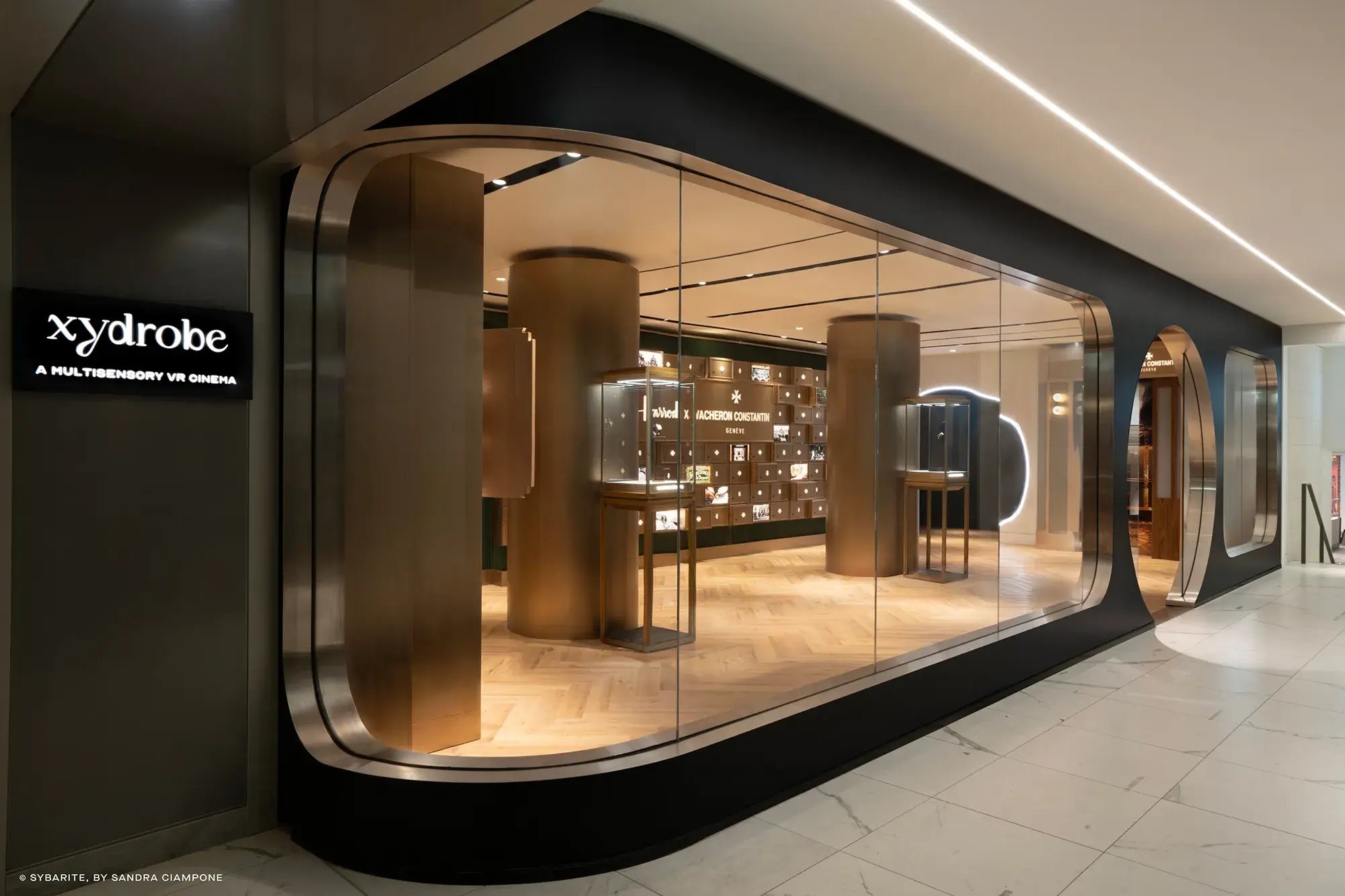
Originating in gaming and film, world-building is evolving into a framework for brand storytelling and experience design. It involves the strategic creation of an experiential universe that goes beyond selling products or services. Brands define the settings, stories and values that shape how audiences experience and relate to their world.
In luxury, world-building serves as a new kind of creative infrastructure. Brands can position themselves as cultural entities, and drive loyalty and long-term engagement across different touchpoints.

‘We’ve come from a time where there’s been so much information and so much transaction. We need some inspiration and relief from that… inspiration, awe, wonder’
Ivy Ross, vice-president of design for hardware, Google
At a more interactive level, technology is making it possible for consumers to explore, customise and even co-create their place within a brand’s universe.
While luxury has historically been exclusive, this model invites participation. Not everyone can own the product, but they can access the story.
As Ivy Ross, vice-president of design for hardware at Google, notes, the goal here is about more than just interaction and technological fluency. ‘We’ve come from a time where there’s been so much information and so much transaction,’ she explains. ‘We need some inspiration and relief from that… inspiration, awe, wonder.’ It is a shift that will see brands surpass what is expected. ‘The ones that win are going to be the ones where people resonate with what you’re doing.’
Looking ahead, technology could allow these stories to be written and expanded inside shared, high-fidelity digital environments. Campaigns, activations and even flagship stores can be developed in parallel.
As brand worlds become more expansive, keeping the story clear, consistent and believable across every touchpoint is more important than ever. This calls for a mindset in which the brand world becomes a place audiences visit, explore and belong to.
Retail remains one of luxury’s most powerful consumer platforms – but its role is evolving as expectations shift from transaction to experience. Immersive technologies bring with them the possibility to design stores not only for appearance or function, but also for interaction and ongoing adaptability. Immersive technologies can also help overcome the physical constraints of retail; for example, by visually extending smaller stores to present richer experiences.
Brands including Coach and Tommy Hilfiger have experimented with digital replicas of their stores, although with limited commercial success. The cost and complexity of producing immersive assets at scale – particularly at sku level – can be a barrier worth noting.
But the future is not about replicating the store experience. It is about re-imagining retail from a limitless perspective to reach well beyond what most traditional transactional online e-commerce and bricks-and-mortar stores offer today.
‘On average, we’ve seen a 70% increase in sales from our activations, using immersive tech not just to captivate, but also to educate and inform’
Isabella Gallucci, chief brand officer, xydrobe
‘Immersive technologies are shifting the focus of the retail environment towards experience-driven entertainment,’ explains xydrobe’s Gallucci, describing this as a more emotional kind of ‘theatre’ – and an alternative to conventional branded content. ‘On average, we’ve seen a 70% increase in sales from our activations, using immersive tech not just to captivate, but also to educate and inform.’
At the same time, retail is becoming storified. The Moncler Genius series, while not digitally simulated, points to a new era of editorialised retail in which spaces evolve frequently and are designed for visual narrative and sensorial impact.
Meanwhile, future retail will also play a vital role in housing luxury’s evolving connected product offerings. Brands are exploring new ways to digitise products themselves – not just spaces. With digital product passports set to become mandatory in the EU by 2026, companies such as Open.Mode are working with labels like Mother of Pearl to embed blockchain-based digital ID tags. These product-level innovations could integrate with spatial systems to offer customers real-time storytelling, traceability and interaction within the retail setting.
Valentino is among the brands experimenting across a spectrum of immersive retail applications. From AR try-ons for accessories to augmented photo booths for beauty launches, it is exploring how digital replicas of products and spatial experiences can enrich the buying journey and extend the footprint of retail.
Beyond creative activation, immersive platforms can support operational excellence too. Drawing on practices from placemaking and hospitality, teams can simulate layouts, model customer flow and refine spatial design before any building begins. Once live, stores can evolve with seasons, campaigns or behavioural insights – helping brands design and manage spaces with agility.
Together, these shifts point to a near future when luxury retail will be choreographed and powered by systems that help brands not only to express identity, but also to adapt to context. The result will be a living stage for brand stories.
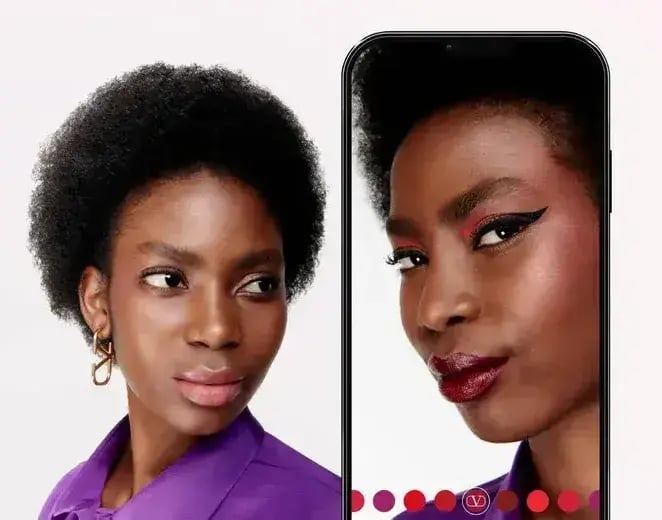
Luxury has always been a cultural force. Today, it’s also an entertainment engine. As brands operate more like studios and cultural producers, technology is laying the groundwork for a critical shift in how we design luxury experiences that push creativity and culture to new heights – and at scale.
Immersive technologies have the capacity to shift storytelling from linear to layered. As Imerza’s Dorian Vee explains, once brands have central models, ‘how those assets are used is open-ended – it could be retail, marketing centre, pop-up, AR or personal device consumption’.
The rise of brand-driven entertainment, such as LVMH’s 22 Montaigne Entertainment – a dedicated platform to co-develop film, television and audio formats – marks a growing shift now in motion. With this venture, the group is doing more than placing product into culture. It’s investing in the infrastructure to make, own and amplify cultural movements.
Other activations are testing this ambition. Tied to the release of Piece by Piece, the Pharrell Williams Lego biopic, the Louis Vuitton menswear director collaborated with Lego on a live immersive installation in Los Angeles that hints at what’s possible when storytelling, entertainment and retail converge. While not overtly driven by tech, it demonstrates how brands can think about scaling these kinds of moments more fluidly across media and spaces.
‘One of the most exciting developments in immersive storytelling for the luxury sector is the growing potential of biometric feedback through VR technologies. The ability to dynamically adapt an experience in real time based on how the individual is feeling or reacting will revolutionise personalisation’
Isabella Gallucci, chief brand officer, xydrobe

Meanwhile, gaming continues to function as both a creative testbed and a commercial channel. Luxury’s partnerships with platforms like Roblox and Fortnite have normalised the idea of in-game intellectual property (IP) expressed as digital environments, skins and avatars. These formats offer marketing cachet, revenue, community and new expectations for brands. But it is the increasingly cinema-grade, photorealistic experiences offered by game engines where much of the potential for building the next phase of luxury lies.
This is not about superficial brand extensions. It is an approach that works best when both brand and platform DNA feel in synch. As immersive technologies begin to support both creative and operational workflows, they could – when used correctly – offer a foundation to produce culture and experience in tandem.
It is here that immersive tech’s operational potential meets cultural promise, with the possibility of uniting shows, stores and campaigns within a single creative framework. It can also bring creative clarity across departments and touchpoints, ensuring the brand’s emotional signature is maintained even as execution scales. Lastly, it makes hybrid activations – those that exist simultaneously in physical and digital spaces – more viable and more coherent.
Gallucci at xydrobe also shares her perspective on the integration of biometric feedback in creating personalised experiences at scale: ‘One of the most exciting developments in immersive storytelling for the luxury sector is the growing potential of biometric feedback through VR technologies,’ she explains. ‘The ability to dynamically adapt an experience in real time based on how the individual is feeling or reacting will revolutionise personalisation.’
As brands act more like studios and producers, immersive platforms will offer the operational backbone to scale creativity and cultural relevance. Those that embrace this shift will find new ways to move at the speed of culture without compromising on craft. Immersive technology allows them to test, stage and distribute moments that feel alive and layered across an entire eco-system.






Luxury now stands at a point when immersive technologies can support both creative freedom and operational clarity.
As this report has shown, the value of these technologies is greater than spectacle or simulation. What is most exciting here is the capacity to bridge worlds: between concept and execution, craft and commerce, emotion and environment. They’re also reshaping how brands gather insights and data from immersive environments – especially in relation to the consumer experience – to inform creative and cultural value creation at scale.
Clearly, immersive technologies are reshaping the terrain on which luxury is designed, built and experienced – how immersive consumer intelligence is gathered and leveraged to achieve exceptional creative and cultural value creation at scale.
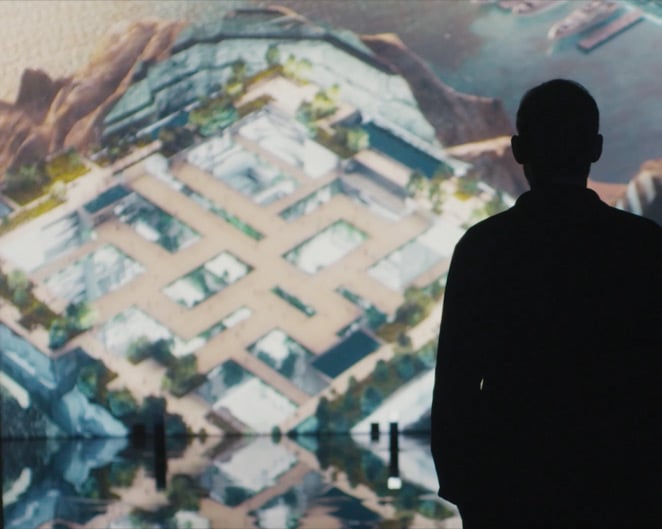
In the built realm, these technologies are helping brands articulate vision with greater fidelity, aligning stakeholders with greater clarity, and building environments that can evolve in real time. In the experiential brand realm, they’re unlocking new modes of narrative and expression, as well as brand participation and cultural production – giving brands the technologies and frameworks to operate more like studios, storytellers and producers of experience. In doing so, luxury is pushing to become more personalised and, arguably, more dynamic. And not only in the digital environment.
‘The vision is to leverage innovative digital-twin technologies to empower the brand’s creative directors to share and amplify their creative visions in the most uncompromising ways with the brand’s diverse audiences. Eventually transforming the traditional, siloed ways of luxury marketing and communications, and equally transforming the luxury retail experience – for both online retailers and offline, physical retail’
Christian Kurtzke, CEO, Together Group
This report was created by The Future Laboratory in collaboration with the Together Group, a global collective of best-in-class agencies spanning brand, digital, content and commerce, with deep expertise in the lifestyle and luxury sectors.
Ready to build your luxury operating system? Contact Together Group to explore how immersive technologies can transform your brand’s creative and commercial vision.

Disruptive times require daring and challenging thinking, which is why many leading businesses partner with The Future Laboratory when looking to stand out.
Want to work with us to position your business as a powerful thought-leader, secure hard-to-land headlines and develop award-winning content? Get in touch with us at hello@thefuturelaboratory.com
Report Editor : Alex Hawkins
Design and Art Direction : Samuel Davies
Creative Direction and Visualisation : Savannah Scott
Illustrations : Erola Boix
Web construction : Deeply Digital